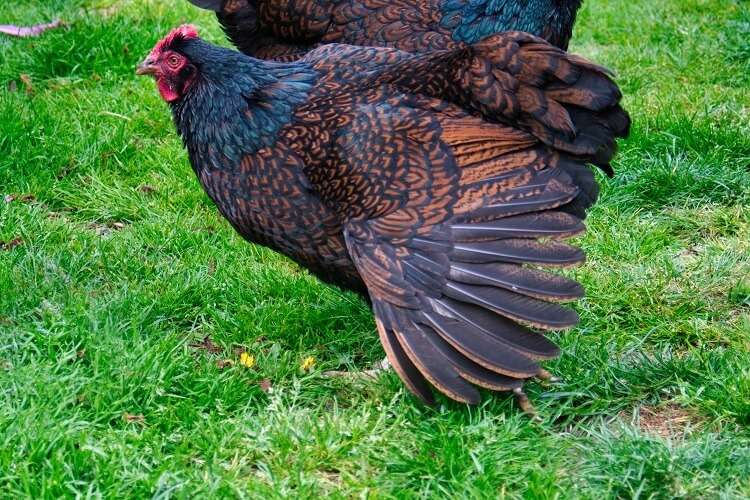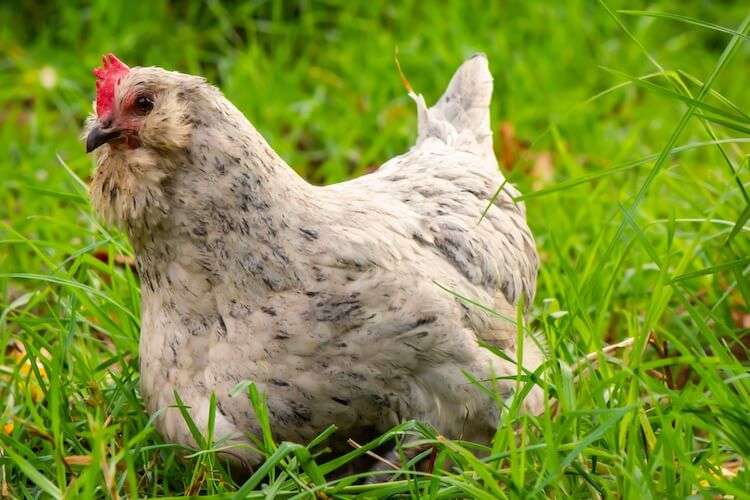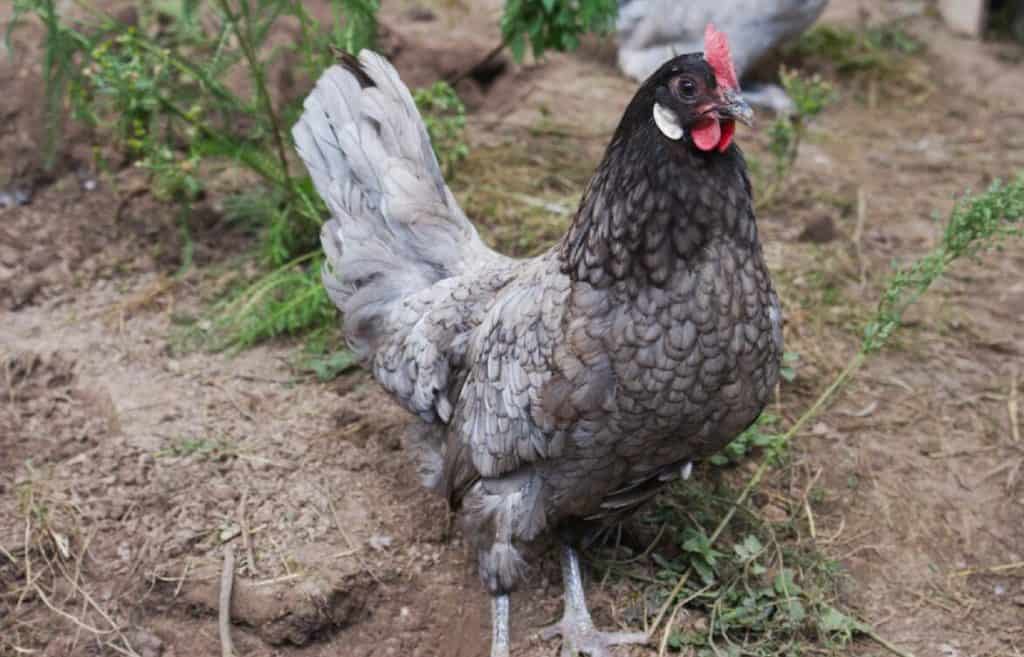
The Barnevelder is a domestic chicken breed from the Netherlands. Various “Shanghai” birds imported from Asia to Europe in the latter half of the nineteenth century resulted in crossbreeding between indigenous Dutch chickens and these birds, which may have been of the Brahma, Cochin, or Croad Langshan type. It is named after the municipality and town of Barneveld in the central Dutch province of Gelderland. The hens, unlike some other breeds, continue to lay well over the winter and are good layers of huge brown eggs.
Description
The most common variety is the double-laced golden Barnevelder. Small wattles and earlobes will be present, and this breed will have a single red comb. Her beak is horn-colored, and her eyes are a red bay color. They should have completely black feathers on their head and neck. onto their body now. Their feathers should have double lacing patterns made of mahogany and black marks.
The roosters’ feathers are mostly black, with reddish or brown feathers on the back, shoulders, and wing triangle. Her skin and legs are both yellow, like hens and roosters. With this breed, you can choose from a variety of colors: Black, White, Silver, Blue, Chamois, Gold (double laced), Silver (double laced), and Blue (double laced). Particularly the twin laced types have stunning plumage.
As Pet

Housing
Due to their regular size, barnevelder hens don’t require a large amount of coop space. Only 4 square feet of living area are required for these chicks. These chickens don’t require a large coop because they rarely fight or become angry, as long as the coop can comfortably accommodate each chicken. Roosting bars that are 8 to 10 inches wide should be included in a suitable barn for your Barnies. Like other varieties, Barnevelder hens prefer to roost on bars because it makes them feel safer than doing so on the ground.
Having adequate ventilation will assist your Barnevelder chickens with the summer heat, which can be miserable for them. Your chicken coop may include a few windows that will let in fresh air and make sure stale air is expelled, keeping the coop fresh. Your Barnies will be more at ease if they have good bedding made of hay, wood shavings, or sawdust. Because Barnevelder chickens are excellent layers, the coop should have plenty of nesting boxes. Nesting boxes will give your chickens a cozy and secure location to deposit their eggs because they feel secure doing so in calm, comfortable settings. Your Barnevelder chickens need a nest box that is 12 x 12 inches in size. Your chickens can fit in such a nesting box.
Similar to other breeds, possums, rats, cats, and dogs find Barnevelder chickens to be simple prey. For your Barnies, your coop must be safe to prevent predators from approaching your birds.
Feeding
Young Barnevelder chicks and hatchlings can thrive on protein crumbles that provide 20–24% protein. After hatching, they should consume the protein crumbles for at least eight weeks. Until your young hens reach the egg-laying stage, keep feeding them a protein meal that contains around 20% protein. When your chickens are about sixteen weeks old, keep reducing the protein intake for them by switching to a layer feed with about 16% protein. At this time, the layer feed can either be a pellet or crumble.
Barnevelder chickens should consume a protein meal containing about 20% protein when they are going through stressful circumstances, including molting. Such a high protein content can speed up the metabolism of your chickens. Even though most chicken diets provide a sizable amount of protein, your Barnevelder hens require more protein than that. The average chicken diet has 15% protein overall.
Because it is one of the most expensive ingredients in chicken feed, the majority of producers will only utilize a very little amount of protein in their diets. To improve the amount of protein your Barnevelder chickens consume, think about providing them with a variety of protein-rich foods. Due to their 53% protein content, dried mealworms are extremely high in protein. The small amount of protein in chicken feed will be perfectly complemented by a handful of dried mealworms. Additionally a fantastic natural source of protein for Barnevelder chickens and other breeds, dried fly larvae.
Grooming
To get rid of extra oils and bothersome pests that might be paying them unwanted attention, their lovely plumes require a frequent dust bath. They won’t have routine human checks for mites, lice, and other parasites since they like the attention too much. De-worm your flock frequently to keep them healthy, especially if they contact kids or other household animals.
Temperament
Barnevelder hens are a tad laid back and lethargic. Their personality is described as vivacious and eccentric. Although they are not a vigorous or athletic breed of chicken, they do enjoy moving around. They are adaptable and do well in captivity, but they do prefer to forage and roam freely. The roosters seem submissive and serene. Barnevelder hens get along well with people, especially kids, and are amiable. They are heavy, yet they enjoy being carried.
Hens and roosters make equally excellent parents. New chicks are known to be nurtured and raised by roosters. Hens are capable of incubating their own eggs and giving their offspring excellent care. Barnevelder chickens do well socializing with other chicken breeds and domestic animals.
Table





